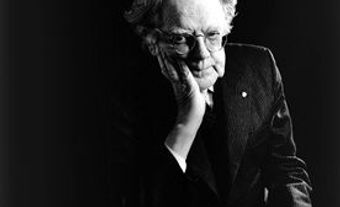Comparative Literature
Comparative literature is the international or multilingual study of literary history, ie, of broad currents of thought and style and of major schools; of literary genres, forms and modes; of motifs and themes; of the presence of a work of literature, an author, a whole literature or even a country, in another national literature; of authors writing in different languages, but linked with "influences" and typological affinities. Comparative literature includes literary criticism and theory, and sometimes folk or ORAL LITERATURE, as well as the interdisciplinary interrelationships of literature with the other arts and even with other expressions and studies of man, eg, philosophy and psychology.
Although present in most countries with established universities and research centres in the humanities, the discipline has been traditionally strong in France, the US and eastern Europe. It varies from the "orthodox" or "French" school, with its rigorous search for historical evidence of contacts, imitations, translations and influences, to the North American insistence on methodology and theory, to the eastern European insertion of this approach into the vast study of the history, theory and criticism of world literature.
The term "littérature comparée" was probably first used in 1827-28 by the French scholar Villemain and was popularized by the influential critic C.A. Sainte-Beuve. Its rendering in English as "comparative literature" by Matthew Arnold is somewhat misleading, for the discipline is defined less by comparisons (which occur in any inquiry in the humanities) than by studies based on the concept that literature, in addition to being the product of a nation and the expression of a language, is also - like music or painting - a universal human phenomenon.
The discipline has been exposed to older methodological trends in scholarship such as 19th-century positivism and philology, 20th-century history of ideas, Marxism, sociological perspectives and psychoanalysis. Recently it has been inspired increasingly by linguistic models, eg, in belated manifestations of formalism and particularly structuralism and communication theory (semiotics).
In Canada comparative literature became an academic discipline only in the 1960s. Among the academics interested at an early point in comparative literature, the foremost place belongs to Northrop FRYE, who was the first chairman of University of Toronto's Comparative Literature Programme. His various works, including Anatomy of Criticism (1957), The Secular Scripture (1976) and The Great Code (1982), have confirmed him as the prime Canadian literary historian and theoretician.
Although there was little systematic teaching of comparative literature until the end of the 1960s, Canadian universities granted, between 1921 and 1969, about 125 graduate degrees based on comparative topics; quite a few Canadians studied abroad (mainly in France, eastern Europe and the US).
The graduate program at University of Alberta, the first in Canada (established 1964), became a full-fledged department in 1969, with both undergraduate and postgraduate instruction. During this period other universities created graduate programs, sharing staff and facilities with English or French and departments of foreign languages. In the early 1980s graduate degrees were offered at Carleton, McGill, Université de Montréal, University of Toronto, UBC and Université de Sherbrooke; experiments with undergraduate courses have taken place at Windsor, Dalhousie, Mount Saint Vincent, Saint Mary's, Athabasca and Calgary.
Some preferences are visible in Canadian schools: eg, literary theory and methodology with an emphasis on structuralism and semiotics at Université de Montréal; social theories and literature practice at McGill; theory and methodology with myth criticism, hermeneutics, phenomenology and structuralism at Toronto; methodological pluralism, translation theory and literary history at University of Alberta; and comparative Canadian literature at Sherbrooke. Specialized research centres have been established at Carleton, McGill and Toronto, and a research institute has been established at U of A.
Comparative Literature in Canada, a bilingual newsletter started in 1968, publicizes Canadian programs and theses. It also acts as the "public archives" of the Canadian Comparative Literature Association (founded 1969). The association, which organizes yearly scholarly meetings, founded the Canadian Review of Comparative Literature/Revue canadienne de littérature comparée in 1974, and embarked on a series of books and monographs in 1977. The association and its members have contributed markedly to the professional and scholarly life of the International Comparative Literature Association, of which a Canadian, Eva Kushner, has been president. Canadian comparatists have participated at most international and many national meetings of the profession and have published widely at home and abroad.
Comparative literature as a discipline in Canada has contributed to the methodological renewal of literary studies in the country and has facilitated research links with international scholarship. Nevertheless, it is financially, administratively and academically still in a precarious position, without a firm basis in the high-school curriculum or in the undergraduate liberal arts education. From the outside it is often perceived as elitist and cosmopolitan, whereas from the inside it appears to its practitioners as today's core of inquiries into literature. There is no doubt, however, that it corresponds to the very multicultural and multilingual nature of Canada, and to the character of international scholarship.

 Share on Facebook
Share on Facebook Share on X
Share on X Share by Email
Share by Email Share on Google Classroom
Share on Google Classroom


